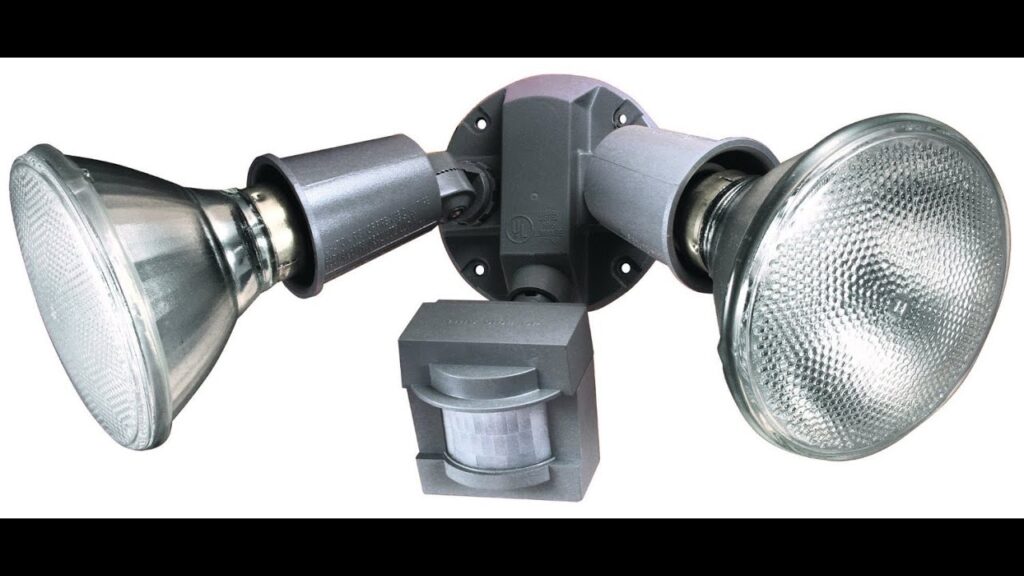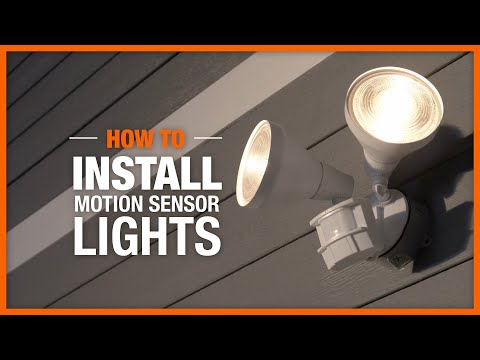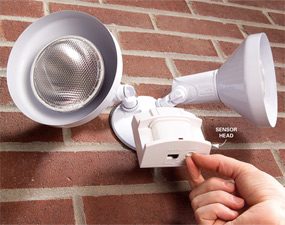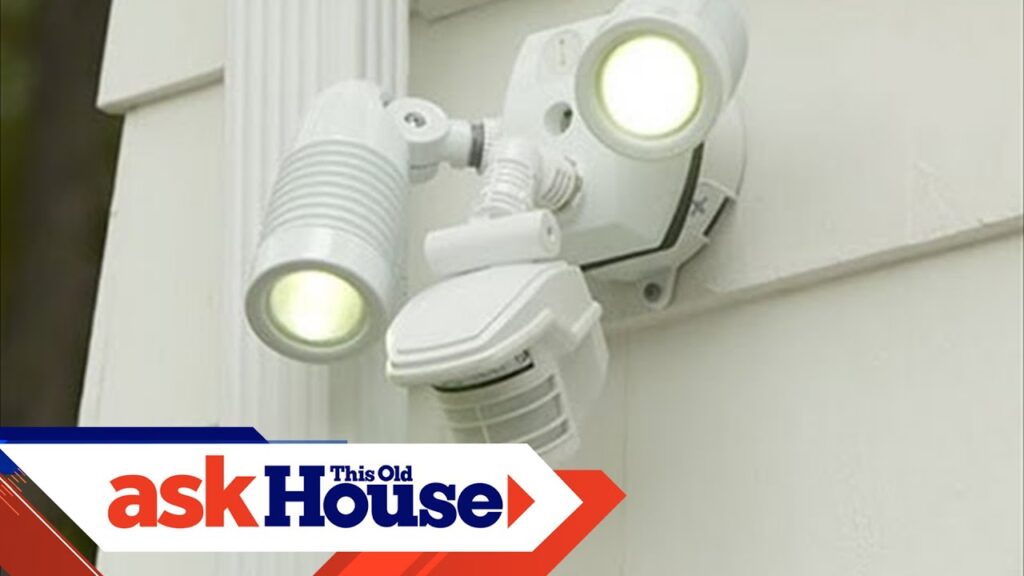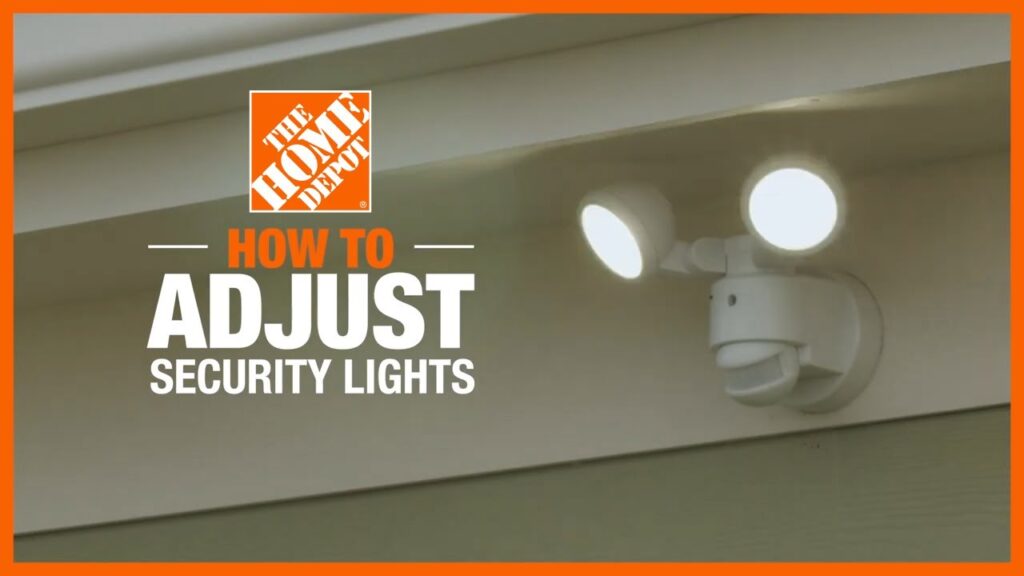In this article, you will learn how to install and set up motion-activated security bulbs for your home. These bulbs are a convenient and effective way to enhance the security of your property. You will discover the step-by-step process of installing the bulbs and configuring their settings to ensure optimal performance. By the end of this article, you will have the knowledge and confidence to protect your home with motion-activated security bulbs.
Choose the Right Location
Before installing your motion-activated security bulbs, it’s crucial to choose the right location. The placement of these bulbs can significantly affect their performance and effectiveness in enhancing your security. Here are a few factors to consider when evaluating the location for your bulbs:
Evaluate the Area
Start by assessing the area where you want to install the motion-activated security bulbs. Look for potential entry points, blind spots, and areas where intruders are more likely to pass through. High-traffic areas such as driveways, front porches, and backyards are usually ideal spots for these bulbs.
Consider the Range of Motion
The range of motion of your security bulbs refers to the area that they can detect movement. Different bulbs have different ranges, so it’s essential to take this into account when choosing the location. Consider the size of the area you want to cover and make sure the bulbs have a wide enough detection range to adequately cover it.
Check for Obstructions
Lastly, check for any obstructions that might interfere with the motion detection capabilities of your bulbs. Trees, shrubs, and other objects in the direct line of sight can trigger false alarms or prevent the bulbs from detecting actual movement. Clear away any potential obstructions to ensure optimal performance.
Prepare the Bulb and Accessories
Once you have decided on the location for your motion-activated security bulbs, it’s time to prepare them for installation. Proper preparation ensures a smooth and hassle-free setup process. Follow these steps to get your bulbs ready:
Unbox the Bulb
Start by unboxing your motion-activated security bulb. Take a moment to familiarize yourself with its features, specifications, and any additional accessories included in the package. Read the user manual carefully to ensure you understand the installation and setup instructions.
Inspect the Accessories
Inspect the accessories that come with the bulb, such as the mounting bracket, screws, and any other components. Make sure everything is in good condition and nothing is missing. If you notice any damage or missing parts, contact the manufacturer or retailer before proceeding.
Assemble the Mounting Bracket
Before you can install the bulb, you may need to assemble the mounting bracket. This bracket is used to secure the bulb to the desired surface. Follow the instructions provided to correctly assemble the bracket. Ensure it is sturdy and securely attached to the bulb before moving on to the next step.
Install the Mounting Bracket
With the bulb and accessories prepared, it’s time to install the mounting bracket. The mounting bracket is crucial for securely positioning the bulb in the chosen location. Here are the necessary steps to install the bracket:
Select a Suitable Surface
Choose a suitable surface on which to mount the bracket. It should be sturdy enough to support the weight of the bulb and withstand any environmental conditions. Common surfaces include walls, ceilings, or light fixtures. Ensure the surface is clean and free of any debris before proceeding.
Mark the Position
Once you have chosen the surface, mark the positions where you will be attaching the bracket. Use a pencil or a marker to make clear and visible markings. Double-check the markings to ensure they are level and properly aligned.
Secure the Bracket
Using screws or other recommended fasteners, secure the mounting bracket to the marked positions. Make sure the bracket is tightly and securely attached. This will prevent any unwanted movement or tampering.
Connect the Bulb to Power
After successfully installing the mounting bracket, it’s time to connect the motion-activated security bulb to a power source. This step is essential for providing the bulb with the necessary power to operate. Follow these steps to ensure a safe and proper connection:
Locate Power Source
Identify a suitable power source to connect your motion-activated security bulb. This could be an existing light fixture, an electrical outlet, or a designated power source specifically for security lighting. Ensure the power source is accessible and compatible with the bulb’s power requirements.
Connect Wiring
Follow the manufacturer’s instructions to connect the wiring of the bulb to the power source. This usually involves connecting the wires using wire connectors or stripping the wires and twisting them together securely. If you are unsure about the wiring process, consult a licensed electrician for assistance.
Secure Connection
Once the wiring is properly connected, secure the connection by tightening any screws or locking mechanisms. This ensures that the connection remains stable and reduces the risk of any electrical hazards.
Configure the Motion Settings
Now that your motion-activated security bulb is properly connected to power, it’s time to configure its motion settings. These settings allow you to customize the bulb’s behavior based on your specific preferences and security needs. Here’s how you can configure the motion settings:
Access the Control Panel
Most motion-activated security bulbs come with a control panel or interface that allows you to access and adjust their settings. This can be a physical switch, a remote control, or a smartphone application. Locate the control panel and familiarize yourself with its features and functions.
Adjust Sensitivity Level
The sensitivity level determines how easily the bulb will detect motion. Higher sensitivity levels make the bulb more responsive to even subtle movements, while lower levels require more significant motion to trigger the bulb. Adjust the sensitivity level to a setting that best suits your needs and environment.
Set Detection Range
Along with sensitivity, you can also adjust the detection range of your motion-activated security bulb. This determines how far the bulb will detect movement in its surroundings. Set the range based on the area you want to cover and consider any potential obstructions or nearby objects that might affect its performance.
Test the Motion Activation
With the motion settings configured, it’s time to test the motion activation of your security bulb. This helps ensure that the bulb is working correctly and that it can effectively detect any movement in its vicinity. Follow these steps to conduct a thorough motion activation test:
Activate the Bulb
Turn on the security bulb and ensure it is properly functioning. Allow it a few moments to warm up and stabilize its sensor.
Walk Through the Area
Enter the area that the bulb is meant to cover and walk around different parts of the space. Move both near and far from the bulb to test its detection capabilities. Note any delays in activation or false triggers that may need adjustment.
Observe Motion Detection
Observe the bulb’s response to your movement. It should consistently and accurately detect any motion within its range. Make a note of any areas where the detection might be weaker or if there are any blind spots.
Fine-Tune the Settings
After testing the motion activation, you may need to fine-tune the settings of your motion-activated security bulb. Every environment is unique, and by making adjustments, you can ensure optimal performance and minimize false alarms. Here are a few things to consider when fine-tuning the settings:
Experiment with Sensitivity
If you found that the bulb triggered false alarms or missed detecting certain movements during the test, experiment with adjusting the sensitivity level. Find the right balance where the bulb responds accurately to actual motion while minimizing false triggers.
Adjust Detection Range
Similarly, adjust the detection range if you noticed any areas that were not adequately covered during the test. By increasing or decreasing the range, you can fine-tune the bulb’s ability to detect movement based on your specific needs.
Test in Different Lighting Conditions
Lastly, test your motion-activated security bulb in different lighting conditions. You may find that its effectiveness varies depending on the time of day, ambient light sources, or even weather conditions. By testing it in various lighting scenarios, you can ensure that the bulb performs consistently.
Additional Features and Customizations
Motion-activated security bulbs often come with additional features and customization options. These extra functionalities can enhance your overall security experience and make your setup even more convenient. Here are a few additional features to explore:
Explore App Integration
Some motion-activated security bulbs can be integrated with smartphone applications. Through these apps, you can remotely control and monitor your bulbs, receive notifications of detected motion, and even adjust settings while you’re away from home.
Schedule Lighting Modes
Consider scheduling different lighting modes for specific times of the day or night. This can help simulate occupancy and make it appear as though someone is home, even when you’re not. Scheduling lighting modes adds an extra layer of security and can deter potential intruders.
Connect with Other Smart Devices
If you have other smart devices in your home, such as security cameras or smart locks, explore the possibility of integrating them with your motion-activated security bulbs. This interconnected setup allows for a seamless security system where all the components work together.
Maintenance and Troubleshooting
To ensure the longevity and reliability of your motion-activated security bulbs, regular maintenance and troubleshooting are essential. Here are some maintenance tips and troubleshooting techniques:
Clean and Dust Regularly
Over time, dust and debris can accumulate on the surface of your security bulbs, potentially affecting their motion detection capabilities. Clean them regularly using a soft cloth or a dusting brush to remove any dirt or grime. This will help maintain optimal performance.
Address False Triggers
If you notice that your security bulbs are consistently triggering false alarms, consider adjusting the sensitivity level or repositioning them slightly. Sometimes, slight changes in the environment or nearby objects can cause false detections. Troubleshoot the issue until you find the optimal setup.
Resolve Connectivity Issues
If you experience connectivity issues with your motion-activated security bulbs, check the Wi-Fi signal strength in the area and ensure that your bulbs are within range. Additionally, ensure that you have followed the correct installation and pairing procedures outlined in the user manual.
Conclusion
Installing and setting up motion-activated security bulbs can greatly enhance your home security and provide peace of mind. By carefully choosing the right location, preparing the bulb and accessories, installing the mounting bracket, connecting to power, configuring the motion settings, and fine-tuning the setup, you can create a reliable and effective security solution. With additional features and customizations, regular maintenance, and troubleshooting, you can enjoy enhanced security effortlessly and confidently. Invest in motion-activated security bulbs today and take the first step towards a safer and more secure home.

